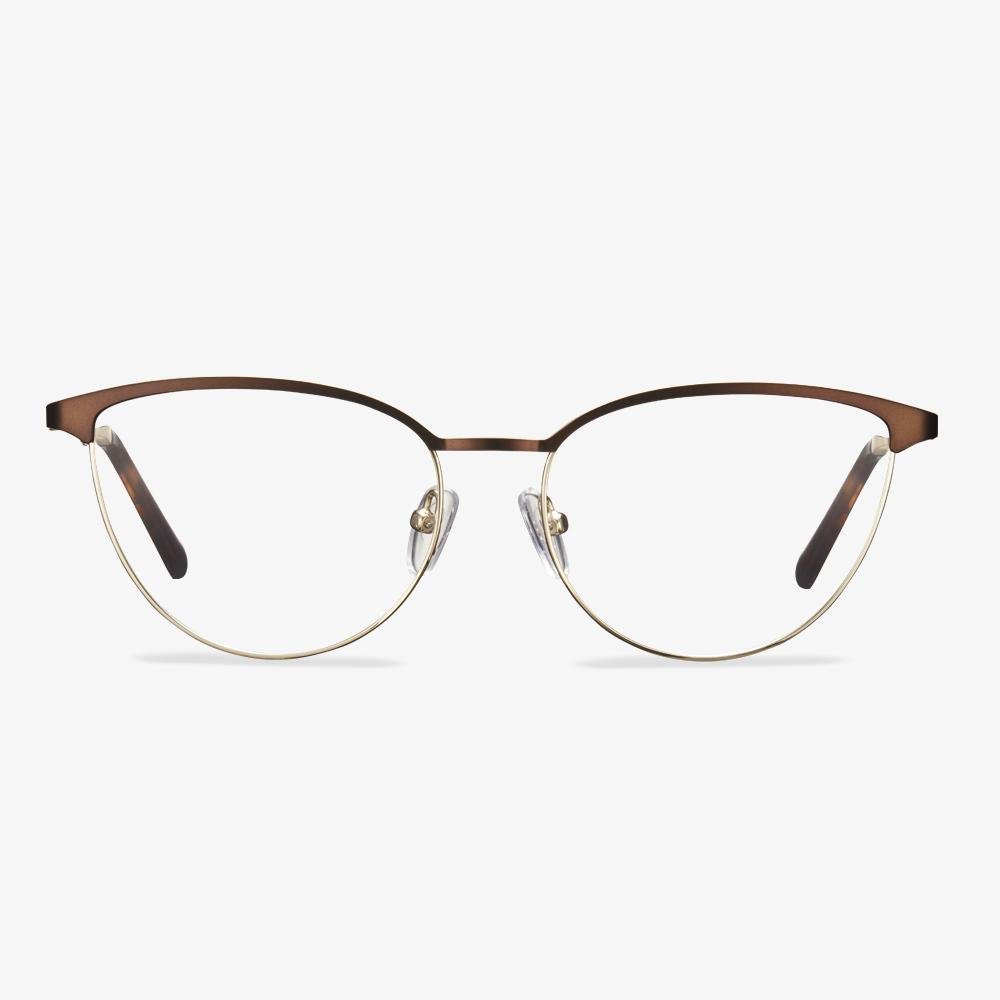What Glasses Are Made Of?
In general, most glasses are made of plastic lenses. Why are glasses lenses made of plastic? In fact, plastic glasses are lighter than traditional glasses lenses used in eyeglasses, which means they are more comfortable to wear. At the same time, it is easy to apply lens coatings like anti-reflective to plastic lenses.
Besides, children’s glasses are also made of plastic because it is more resistant to impact. There are four main types of plastics used to make eyeglasses and sunglasses lenses which are plastic, Trivex, polycarbonate and high-index plastics.
The plastic lenses made from CR-39 were first introduced. CR-39 is an abbreviation for Columbia Resin #39, the 39th plastic of that type made by Columbia Resin.
Then the polycarbonate glasses were invented. Polycarbonate became out of this world once it found use in aeronautics. Polycarbonate is a type of plastic that can be produced as transparent and easily shaped, making it great for glasses lenses. Polycarbonate is impact resistant so that they are a good lens choice for kids. And the polycarbonate lenses have 100% UV protection.
Next, high-index lenses are available. High-index lenses have a high refractive index with a thin lens. Although high-index lenses are thinner, they are heavier due to the higher density of these plastics.
So, what glasses are made of? Most glasses are made of plastics. Then how are glasses made? To get the answer, keep on your reading.
What Are Polycarbonate Glasses?
Polycarbonate was developed in the 1970s for aerospace applications and is currently used for the helmet visors of astronauts and for space shuttle windscreens.
Polycarbonate lenses were introduced in the early 1980s in response to a demand for lightweight, impact-resistance lenses. Since then, polycarbonate glasses have become standard for safety glasses, sports goggles and children’s eyewear.
Polycarbonate glasses are thinner and lighter than regular plastic lenses. They also provide 100 percent UV protection and are up to 10 times more impact-resistance than plastic or glasses lenses.
In addition, Polycarbonate lens provides clearer and more comfortable vision if anti-reflective coating is applied to the lenses, which can eliminate distracting lens reflections that interfere with vision, particularly when driving at night or in other low-light conditions when glare sources are present.
After learning some basic information about polycarbonate glasses, we will show you the advantages and disadvantages of polycarbonate lens.
What Are Bifocals?
There are several kinds of lenses available in the market. Now, there is a kind of lenses by stacking two different kinds of lenses together and they are called a bifocal lens. Bifocal lenses are lenses with lines separating two different prescriptions. There is a presence of a distance lens at the top and the lower part has a lens that can be used to view the objects placed nearby.
Bifocal lenses are designed for people who have presbyopia, a condition in which the person can’t see the nearby placed objects. Presbyopia is an age-related condition, often occurred when people are over 40 and people often have blurred vision.
At the same time, there are different types of bifocal lenses present and they provide the same user which is the lower part of the lens is used to view the nearby objects or to do work related to reading and writing while the upper part of the lens is used to view the objects placed at a faraway distance or to do an activity like driving.
So, in the following section, we will show you the different types of bifocal lenses.
Material selection
General glasses material has plastic and metal two categories. Because the children's glasses degrees change faster, from the economic point of view, choosing plastic material is more affordable. And children love to move, they do not pay much attention to pick up and put on glasses. Choosing metal material is easy to distort, affecting the normal wearing. The material of the lens should be light and thin. The transmittance and refractive index should be high, and it should be wear-resistant and not easy to break.
What are blue light blocking glasses?
As we now spend more and more time on the screen, it is particularly important to pay attention to the effects of blue light. Approximately six out of ten adults will experience digital eye fatigue after using the device for more than 2 hours. Symptoms of digital eye fatigue include headaches, blurred vision, and dry eyes. The technology of blue light blocking glasses can effectively block part of the blue light damage to the eyes, reduce the visual fatigue caused by staring at the electronic screen for a long time and can also reduce the radiation and damage of ultraviolet rays to the eyes. However, the most important thing for eye protection is development. Good eye use habits, close your eyes regularly, and let your eyes rest.
Blue light blocking glasses are glasses that the manufacturer claims can filter out blue light. The lens of this kind of glasses has filter material or surface coating, which can block part of the blue light. People who believe that their eye and vision are damaged by blue light exposure may wear them to reduce blue light exposure.
Blue light is a short-wave blue light in the color spectrum visible to the human eye. Its wavelength is in the blue part of the electromagnetic spectrum, roughly 400–500 nanometers. Researchers believe that peak light damage occurs at approximately 440 nanometers. Computers, laptops, tablets, smartphones, and general lighting can all expose the eyes to blue light.
A round face fits on a square frame.
The human face of a round face is shorter. So they had better match the slender frames that take curves slightly to reconcile the whole feeling. Angular and square frames are helpful to modify facial lines (prominent longitudinal lines). This can promote strengths and avoid weaknesses so that your face appears contour.
Functional zoning of the store
After determining its own positioning, the layout and functional partition of the optical store is very important. From the overall decoration to the details of the layout, they should reflect the professionalism and coordination of the optical shop. The general partitions of the optical shops include the eyeglasses business area, optometry room, contact lens wearing area, processing room, and cashier desk. The eyeglasses business area can be divided into more small modules separately. The division of the area should have a fixed standard. For example, the arrangement of this area can be selected according to the purpose, user group, occasion, and theme of the glasses.











































